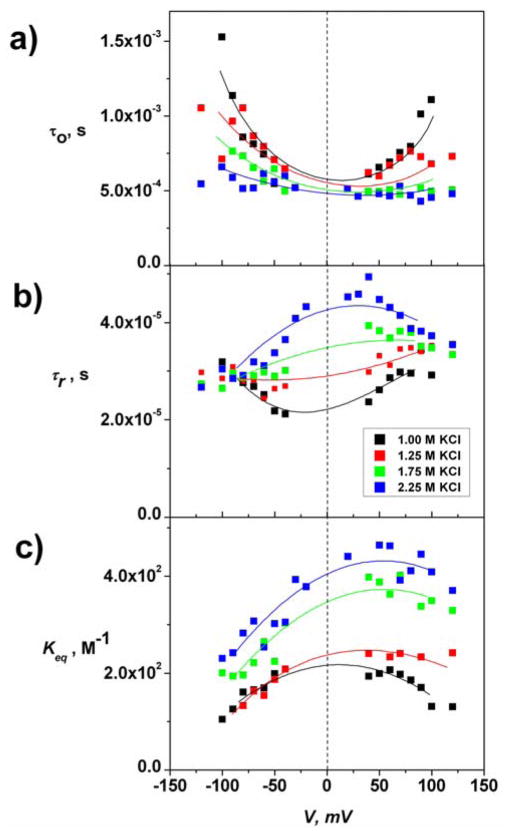Figure 3.
Kinetic and equilibrium parameters of CD-AD complexation at different KCl concentrations. (a) Unblocked time (τo) for αHL-CD, (b) AD residence time (τr.) within CD-AD complexes in the αHL pore, (c) CD-AD association constant, Keq. At zero voltage a 2.25 increase in KCl concentration produces an approximately two-fold increase in the stability of the CD-AD inclusion complex, as τr increases from ~2×10−5 s to ~4.5×10−5 s, while τo, in the limit of small voltages stays almost unaffected, decreasing from ~5.7×10−4 s to ~4.9×10−4 s (Figure 2B). The change in residence time accounts for almost all the increase in the CD-AD equilibrium binding constant.

